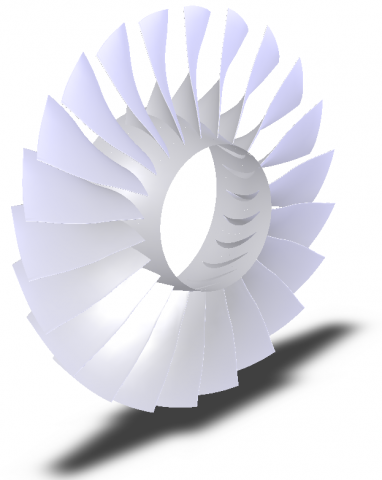C2 - NASA Rotor 67

Test case leader:
Koen Hillewaert
Contact:
koen [dot] hillewaert cenaero [dot] be (koen[dot]hillewaert[at]cenaero[dot]be)
cenaero [dot] be (koen[dot]hillewaert[at]cenaero[dot]be)
info [dot] hiocfd4 cenaero [dot] be (info[dot]hiocfd4[at]cenaero[dot]be)
cenaero [dot] be (info[dot]hiocfd4[at]cenaero[dot]be)
Summary:
The NASA rotor 67 is a well-known validation test case for turbomachinery CFD codes. The aim of this challenge is to see whether fully unstructured high order simulations can be performed.
A first type of contribution concerns the generation of the curved (hybrid) unstructured meshes for a single passage. The requirements are
- minimally quadratic interpolation of the geometry;
- local mesh refinement following size control maps in leakage flow regions;
- curved rotationally periodic boundaries;
- extrusion curved boundary layer meshes, with an aspect ratio up to 1000 for RANS.
For meshing purposes the CAD of a single passage with and without tip gap is available in parasolid and step format. The full rotor has 22 blades.
The second type of contribution concerns the actual RANS/LES/WMLES computation at two operating points, ie. near the design point and near stall. The computation will at least be taken up by the test case leader. For computational contributions, block structured curved meshes will be provided on request.
Features and challenges:
Curved geometry
Arbitrary frame of reference
Steady flow
Unsteady flow
Transonic flow
Turbulent flow
Reynolds Averaged Navier Stokes (RANS)